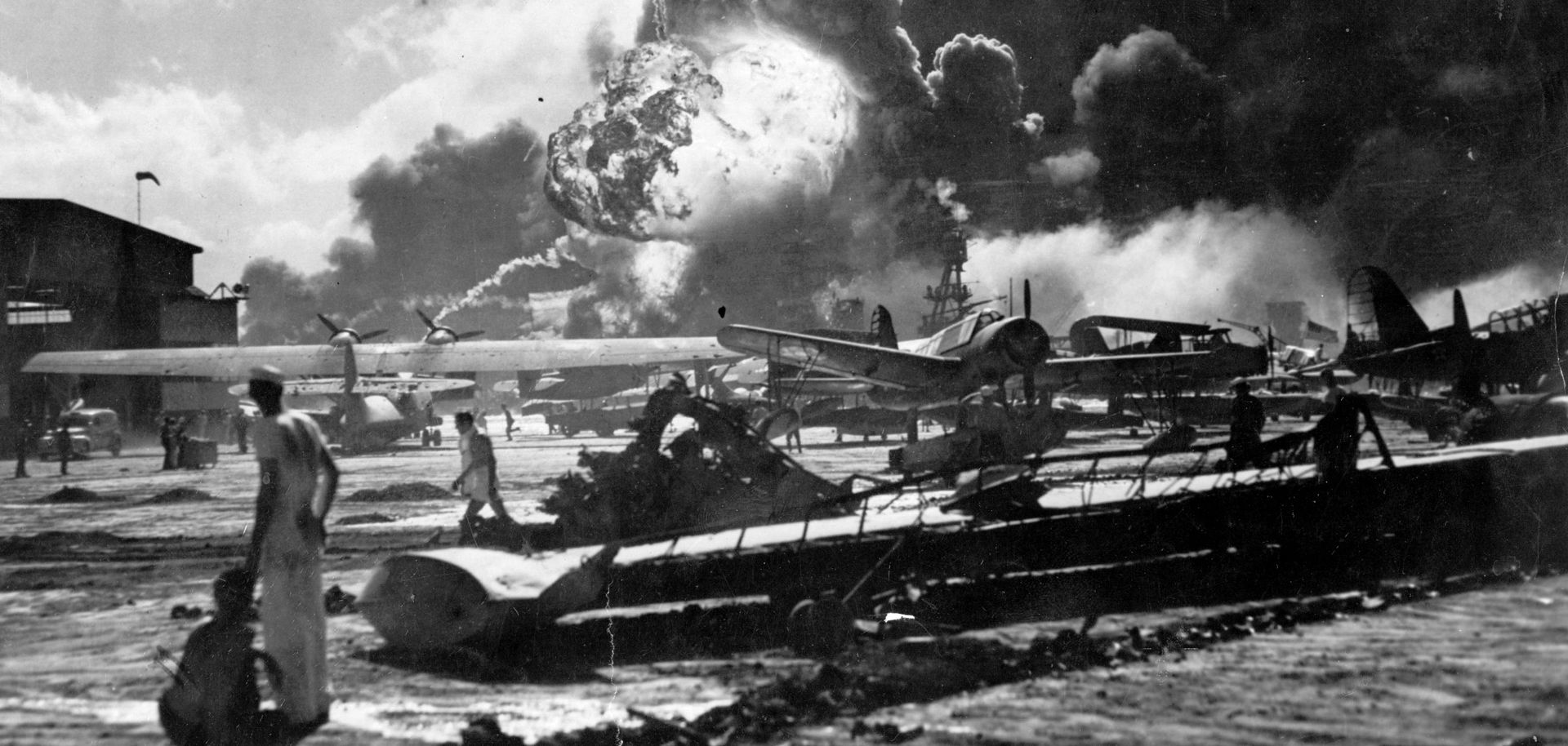ASSESSMENTS
Remembering Pearl Harbor: The Attack That Cost Japan Its Empire
Dec 7, 2014 | 14:00 GMT

(Fox Photos/Getty Images)
Summary
Seventy-three years ago, in the early morning of Dec. 7, 1941, hundreds of Imperial Japanese Navy aircraft were dispatched from six fleet carriers, their flight path south toward the U.S. naval installations, airfields and warships at Pearl Harbor, Hawaii. Japanese B5N aircraft equipped with specially modified Type 91 torpedoes hit Battleship Row, targeting high value capital ships, while D3A dive-bombers honed in on ground targets. Throughout the attack, A6M fighter aircraft provided air cover and strafed targets of opportunity. The same day, the Japanese military moved against U.S. forces in the Philippines, invaded Thailand and landed in the British colony of Malaya. The Pacific War had begun.
In six months, the Japanese had created a large defensive perimeter stretching for thousands of miles from the Indian Ocean to the Pacific. With this frontage secured, the Japanese prepared to hold their ground and force the Allies to negotiate a peace that acknowledged Tokyo's gains. The Japanese High Command, however, underestimated the Allied will to fight as well as the limits of Japan's own resources and manpower. The sweeping push had also hopelessly overextended Japanese forces. This overreach left them vulnerable to the Allied campaigns that ended with Imperial Japan’s surrender on Sept. 2, 1945.
Subscribe Now
SubscribeAlready have an account?
